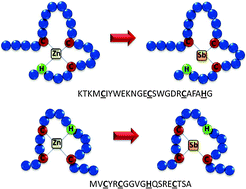*
Corresponding authors
a
Departamento de Fisiologia e Biofísica, Instituto de Ciências Biológicas, Universidade Federal de Minas Gerais, Av. Antônio Carlos 6627, Pampulha, 31270-901 Belo Horizonte, Minas Gerais, Brazil
E-mail:
frezard@icb.ufmg.br
Fax: +55 31 3409 2924
Tel: +55 31 3409 2940
b
Departamento de Química, Universidade Federal de Juiz de Fora, Campus Universitário Martelos, 36036-900 Juiz de Fora, Minas Gerais, Brazil
E-mail:
hevejf@yahoo.com.br
Fax: +55 32 3229 3314
Tel: +55 32 3229 3310
c
Departamento de Bioquímica-Imunologia, Instituto de Ciências Biológicas, Universidade Federal de Minas Gerais, Av. Antônio Carlos 6627, Pampulha, 31270-901 Belo Horizonte, Minas Gerais, Brazil
E-mail:
apimenta@icb.ufmg.br
Fax: +55 31 3409 2614
Tel: +55 31 3409 2662
d
Department of Chemistry, Virginia Commonwealth University, 1001 W. Main Street, Richmond, USA
E-mail:
npfarrell@vcu.edu
Fax: +1 804 828 8599
Tel: +1 804 828 6320
e
Departamento de Química, Instituto de Ciências Exatas, Universidade Federal de Minas Gerais, Av. Antônio Carlos 6627, Pampulha, 31270-901 Belo Horizonte, Minas Gerais, Brazil
E-mail:
demichel@netuno.lcc.ufmg.br
Fax: +55 31 3409 5700
Tel: +55 31 3409 5755


 Please wait while we load your content...
Please wait while we load your content...